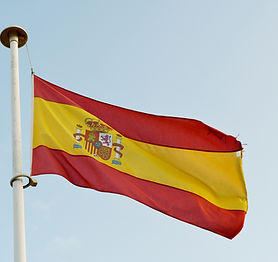Academic Projects
BayLeigh earned her undergraduate degree from Transylvania University, where her liberal arts education challenged her to explore diverse disciplines and expand her creative boundaries. Encouraged by her professors to pursue her passions, she produced a variety of projects that went beyond traditional essays, incorporating innovative methodologies and interdisciplinary approaches.
BayLeigh’s academic experience fostered strong critical thinking, research, and communication skills, all of which continue to inform her professional and creative work. Interested in learning more about one of these projects, or her liberal arts college experience? Please reach out; BayLeigh welcomes conversations about her projects and insights from her liberal arts education.

A COMPARISON OF "DON QUIJOTE DE LA MANCHA" THEMES IN ANIMATED FILMS
Through the use of the narrative rhetorical methodology, my Spanish senior thesis explores two aspects of the classic novel: how the theme of reality versus fantasy as well as the symbolism of Don Quijote and Sancho Panza’s friendship are represented in modern animated films by analyzing the same components in Shrek (2001) and Toy Story (1995).

TRANSYLVANIA UNIVERSITY
THE RHETORIC OF BEYONCÉ: A CRITICAL ANALYSIS OF VISUAL PERFORMANCE
This project examines how Beyoncé’s music videos serve as a rhetorical artifact but also how the artifact contributes to feminist rhetorical theory. By analyzing with a feminist rhetorical lens, this project explores the rhetoric of Beyoncé's music videos and live performances. I designed a website to present my research digitally.

TRANSYLVANIA UNIVERSITY
STIGMA SHAPES PERSPECTIVE: A RHETORICAL ANALYSIS OF THE #NOMORE CAMPAIGN
The #NOMORE Celebrity Campaign presents an interesting approach to addressing the common indifference and stigma surrounding sexual assault in America. This essay studies the rhetorical effectiveness found in four print ads through the lens of arrangement, use of celebrities, and language to raise awareness about how sexual assault is viewed in American society.

TRANSYLVANIA UNIVERSITY
CINEMA INFLUENCES OUR REALITY: AN ANALYSIS OF REPRESENTATION IN FILM
Using the critical race theory, this project explores how identity and intersectionality are portrayed in two Latino films by focusing on the narratives and personal lives of the characters. The goal of this project is to examine how rhetoric in cinema influences or reflects the struggles and marginalization of different groups—in this case LGBTQIA+ Latinos.

TRANSYLVANIA UNIVERSITY
PROMOTIONAL MARKETING VIDEO FOR CARDINAL HILL REHABILITATION HOSPITAL
In collaboration with another student, she and I created a marketing video for Cardinal Hill Rehabilitation Hospital to promote their recreational activities. We interviewed employees, recorded video clips throughout the facility, and filmed major events like the Hill On Wheels Wheelchair Basketball Team playing a game at Rupp Arena.

TRANSYLVANIA UNIVERSITY
A CLUSTER ANALYSIS OF EMMA WATSON’S SPEECH AT UN WOMEN 2014
On September 20, 2014, United Nations Women Goodwill Ambassador Emma Watson delivered a speech about gender equality and co-launched the “HeForShe” campaign. By analyzing Watson’s “HeForShe” speech with the cluster criticism rhetorical method, this essay investigates how rhetoricians call their audience to action, even with contentious causes.

TRANSYLVANIA UNIVERSITY
WOMEN’S ROLE AND INFLUENCE IN THE SPANISH CIVIL WAR (1936-1939)
Written entirely in Spanish, this essay examines the roles of women at the forefront of the Spanish Civil War (1936-1939) by focusing on three different female journalists. Through this critical analysis, I write to exemplify how women have faced inequality to overcome social and political barriers not only in everyday life but also during war.

TRANSYLVANIA UNIVERSITY
THE ROLE AND EFFECTS OF TRIGGER WARNINGS IN COLLEGE CLASSROOMS
In September 2015, Kate Manne, a philosophy professor at Cornell University, published a New York Times op-ed article titled “Why I Use Trigger Warnings." This essay analyzes how the use of a logical fallacy and two of Aristotle’s means of persuasion impact her claim that trigger warnings are necessary in college classrooms (particularly on syllabi).

TRANSYLVANIA UNIVERSITY
CREATING POSITIVE CHANGE FOR BLACK TRANS WOMEN THROUGH NARRATIVES
From recounting her own personal narratives to sharing the stories of other trans women of color, Laverne Cox formulates a call-to-action message in 2014 at the Creating Change Conference. With the use of the narrative rhetorical methodology, this essay determines if the narratives within Laverne Cox’s speech have the intended influence on her audience.
























